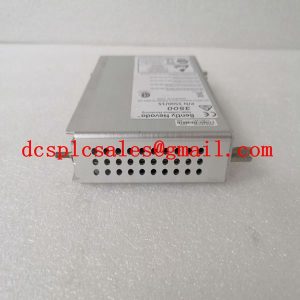Description
146031-01 Bently Transient Data Interface Module
The PLC in the 146031-01 has already integrated functions such as baud rate setting for serial communication into the serial parent device, so the PLC device driver is provided as a child device in the device management window of the MCGS monitoring software. It can use the communication functions of the parent device, i.e. it can share the communication functions of the parent device with other devices. Since there are many PLC devices using serial port, here we take the PLC using serial port communication method as an example to illustrate the development of PLC common driver framework. This PLC driver architecture is also applicable if a customized programming cable is used or if an Ethernet connection is used.The 146031-01 uses RS232, RS485, and RS422 to communicate with the host computer. If a device communicates by RS232, only one device can be connected to a serial port. If the RS485 or RS422 way of communication
The devices of the 146031-01 are divided into two categories: master devices and slave devices. In operation, the slave device listens to the data on the communication line and analyzes this data, and when it receives a request for itself, it sends an appropriate answer frame. The master device will send a request frame to the slave device as needed to request some data or send a command. After sending the request frame, the master device needs to wait for the slave device’s reply, and this waiting process has a timeout limit. If no answer is received after a certain period of time, it will consider this communication failure, and then according to a certain logic to determine whether it should resend the request or give up, then you can use more than one device to form a network, in this network, in order to identify the different devices, to each device with a sign, generally speaking, this sign is called the device address.









